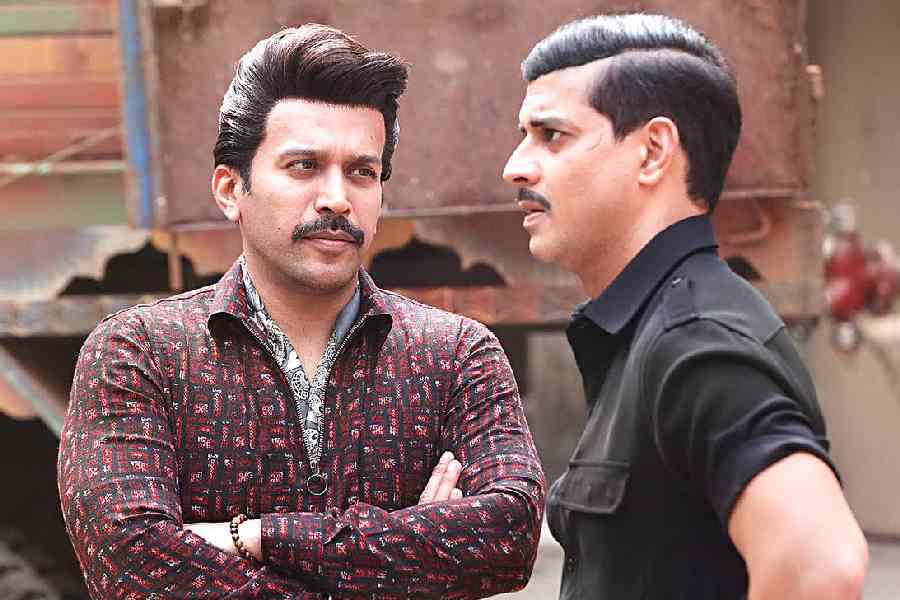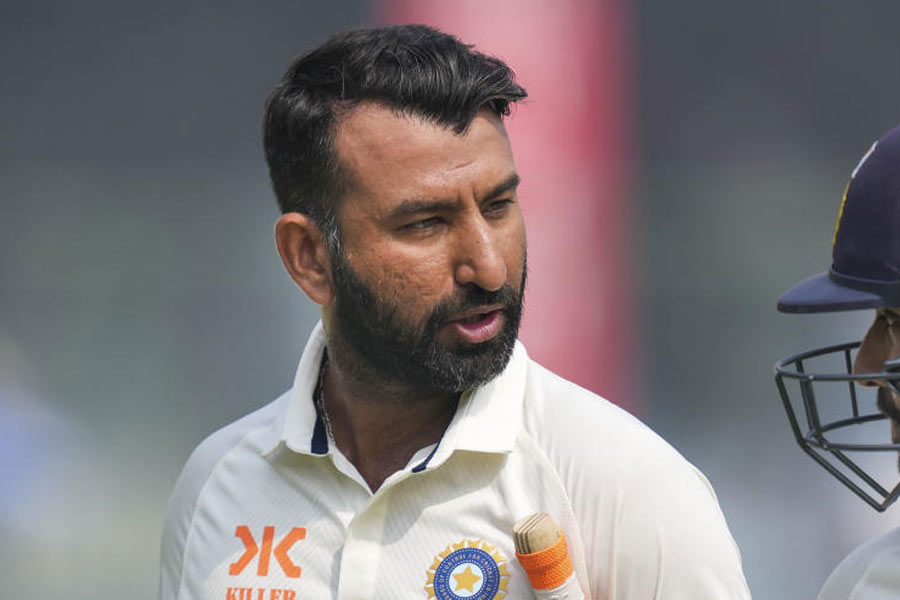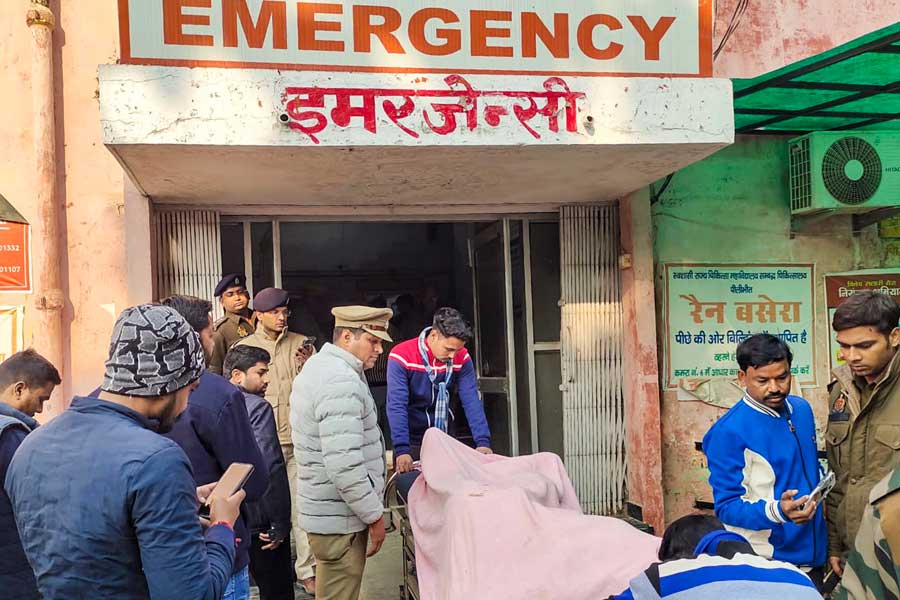After a dream run on OTT last year, Tahir Raj Bhasin is back on the web with the ambitious Sultan of Delhi. Marking filmmaker Milan Luthria’s (Once Upon A Time in Mumbaai, The Dirty Picture) digital debut, Sultan of Delhi is an action-crime thriller based on Arnab Ray’s Sultan of Delhi: Ascension and is set in the 1960s.
It stars Anjumm Shharma in a pivotal role alongside Tahir, with Mouni Roy, Vinay Pathak, Anupriya Goenka, Nishant Dahiya, Mehreen Pirzada and Harleen Sethi making up the rest of the heavyweight cast. With the series set to premiere on Disney+Hotstar on October 13, t2 caught up with Tahir and Anjumm for a chat.
What can the audience expect from Sultan of Delhi?
Anjumm Shharma: The scale of Sultan of Delhi is very classy and big, in terms of having a cinematic experience. With the series, one can expect a larger-than-life experience. This is a performance-based drama. The music is very good. Visually, it has a very rich palette.
Tahir Raj Bhasin: After the trailer dropped, I got a lot of calls asking me if this was a film. It’s been clutter-breaking and while the feel of the show is dark because we are dealing with the genres of action and crime, the story is set in a very interesting and colourful palette.
What is it about your characters that hooked you?
Tahir: For me, it would be his grit. He is from the other side of the border. He doesn’t belong to this land but has the grit and gumption to claw his way up the food chain. That takes raw grit and determination and that’s what leapt at me when I heard about this man.
Anjumm: My character is a guy who is very emotional and lives predominantly in the moment. He doesn’t analyse too much before making a decision. He doesn’t waste much time in his work or in the world that he lives in. He’s a very street-smart guy and he doesn’t take anything seriously. But he has a very strong intent and value system and that gets reflected when he meets Arjun Bhatia, played by Tahir, and his emotional side gets even more charged.
My character Bangali is a guy who is already in that environment when Arjun Bhatia comes in. Arjun joins that environment as a newbie and then he makes his way up. Bangali has a certain protectiveness towards Arjun, there is a sense of camaraderie. It’s a very colourful, layered and emotional character.
What were the toughest and most enjoyable bits about being Bangali and Arjun?
Anjumm: For me, the best thing was the opportunity to associate with a filmmaker with a legacy of the kind that Milan Luthria has. There is a connection that I had already established with him as a viewer before working with him as an actor. I always knew that with him, the placement of the characters and the correctness of the story and situations would be in place.
The scale of the show was quite challenging for me. Also, my character’s journey occurs from point one to point 10. The challenge was to join all these dots and maintain a consistent graph right through till the end of the story. Also, we shot in diverse locations — in the desert, on a ship, and on top of a train.... Executing it definitely came with a lot of challenges.
Tahir: For me, the toughness lay in exploring a part which is so action-heavy, which is a genre that I am exploring for the first time. It required a certain kind of physicality which made me undergo both physical training and weapons training. Some of the action scenes were very, very challenging to shoot. There is a scene in the desert where we are wearing leather jackets and shooting with our AK-47s. While that looks visually appealing, it was 47 degrees that day! From that, we had to get into a scene which was acting-intensive and craft-driven. To make that switch on the same day was a challenge.
Milan Luthria’s debut film was Kachche Dhaage (1999), which starred Ajay Devgn and Saif Ali Khan. One of the most iconic scenes in that was a train sequence and even in Sultan of Delhi, we have a scene where we are sitting on top of a train and there is a drone shot. That, for me, was a major shoutout to Kachche Dhaage.
Tahir, the streaming boom has really benefited your career. There was a period last year when you had a release on almost every OTT platform at the same time. How does Sultan of Delhi add to that?
Tahir: It’s definitely added to it. I think it’s another diverse stroke on the canvas and that was very exciting for me. It was a conscious choice to break the clutter and this was diametrically opposite to anything that I have done before. In Yeh Kaali Kaali Ankhein, I played a very subdued guy who struggles to even get two words out. Arjun in Sultan of Delhi wears a leather jacket and handles an AK-47. He’s very out there.
As you said, OTT has allowed actors to stretch their acting muscles a lot more. There are some stories that just cannot be told in two hours and Sultan of Delhi is one of them. Over eight episodes, one sees a broader graph of the characters.
Retro is having a moment on screens big and small. What was it like travelling back in time and revisiting the ’60s for Sultan of Delhi?
Anjumm: This is an era that has gone by. We tend to have an intrinsic sense of nostalgia about a time that we have only heard of. Their costumes, their conversations, the atmospherics, and the belief system of that time intrigue us. The art and literature of that time were also going through a landmark phase.
A lot of elements went into creating that world in Sultan of Delhi. Hair, costumes, walk and talk.... I also had a lot of conversations with Milan sir about the thought process of people in the 1960s and what would drive them. I knew that the entire palette would be created by the makers. What I had to create was the human side of the characters to make audiences empathise with the character.
Tahir: What’s fascinating for any creative person is that retrospect is very liberating. That’s because it was a more free time. People were discovering fashion in India and it was a time when we were not constantly under a scanner or under censorship. They would live hard, play hard and party hard. That’s at least the genre of the ’60s that you will see in Sultan of Delhi.
You are right when you say that period dramas are in vogue at the moment and are explored in different stories and on different platforms. But what happens normally in Hindi cinema and Hindi OTT is that a period drama traverses two sides of the spectrum — either they end up being caricaturish or the moment one sees it, one knows that it is referenced from a Western production. With Sultan of Delhi, Milan Luthria hits the middle ground very well — he is unabashedly Indian in his aesthetic but he toes the line between making it a caricature and at the same time, entertaining as well.
When I heard the narration, the 12-year-old in me was so excited because the ’60s has been a dream era for me. It’s every boy’s dream come true to be able to wear a vintage jacket, sport a moustache and shoot an AK-47.











